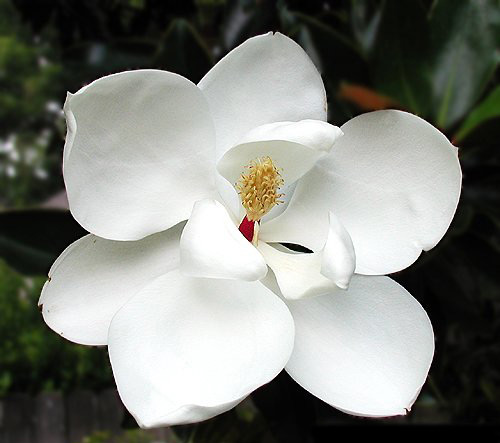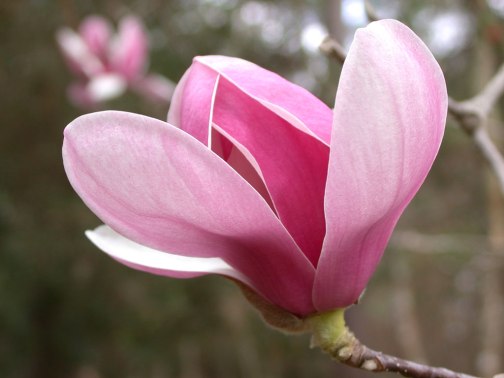Magnolias are such a beautiful tree. They are often considered to be the most spectacular flowering trees that flourish in temperate regions.
They comprise of about 100 species. Both evergreen and deciduous, most with scented flowers. The flowers are often seen to advantage on bare limbs before the foliage appears, and this simplicity contributes to their universal appeal.
Magnolias do well in well drained acid soils rich in manure. Generally fast growing, their fleshy surface roots are easily disturbed so perform better with little or no underplanting. Wind and late frosts can also damage the large flowers. Light shade is generally ideal, as a full sun position will burn the delicate leaves and flowers.
Careful position: Pick a location where the shallow, fleshy roots won’t be damaged by digging or by soil compaction from constant foot traffic.
Soil: Magnolias appreciate fairly rich, well-drained, neutral to slightly acid soil amended with plenty of organic matter at planting time. They will grow in somewhat alkaline soil but may develop chlorosis (yellow leaves with green veins).
Mulching: At least in the early years, keep a relatively thick layer of mulch over the root area.
Watering: Irrigate deeply and thoroughly, but don’t waterlog the soil or the tree will drown.
Fertilizing: Treat chlorosis with iron chelates. Feed trees if new growth is weak, or if you see significant dieback despite adequate watering and drainage. Use a controlled-release product; magnolias are very susceptible to salt damage from overfertilizing, resulting in burned leaf edges.
Pruning: For deciduous magnolias, best time is after bloom; for evergreen kinds, do the job before the spring growth flush. I find that pruning is not always necessary. Unless you need to prune the lower branches.
Some of my recommended species and cultivars are below.
Magnolia ‘Little Gem’- a great small to medium sized tree for those who want an evergreen variety. It will grow to approximately 3-4m. Its distinctive feature is the dark rusty coloured underside of the leaves.
Magnolia x soulangeana (Saucer Magnolia)- this would have to be the most common species of Magnolia. You cant go wrong with this one. Its a classic. Growing to approx. 6m tall.
Magnolia stellata (Star Magnolia) – also a classic Magnolia. Much smaller flowers and differently formed than most. Hence the reason why it is called Star Magnolia, because the flowers look like stars! Grows to approx. 4.5m tall.
Magnolia x soulangeana ‘Vulcan’- darker pink flowers than the standard soulangeana, and also late flowering.
Magnolia stellata ‘Water Lily’- is a slow-growing, rounded, medium-sized deciduous shrub with narrowly obovate leaves. Fully open flowers are pure white. Grows to approx 2.5m.
Magnolia ‘Heaven Scent’ – is a vigorous small tree with dark foliage. Flowers to 10cm in length, cup-shaped with nine rosy-pink petals, soon fading to pale pink with a magenta central stripe on the outside.


